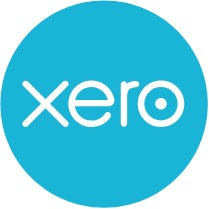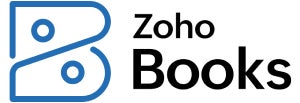You probably don’t need us to tell you that growing a retail business depends on having the right software tools for handling payments and financials. What might not be so obvious is how costly it can be if you choose a solution that doesn’t meet your needs. Retail is a very broad term, and the concerns of an online-only ecommerce brand and a brick-and-mortar local shop are distinct and varied.
Knowing where to look and what to look for in retail accounting apps isn’t necessarily straightforward, though. Given the sometimes confusing nature of the tech industry, it can be a challenge to identify which solutions are suited to your use case.
Fortunately, we know the landscape of this market and can help you by signposting noteworthy brands, features, and trends. This article can jump-start your search for retail accounting apps, so you can shorten your time-to-value for getting new software up and running.
1
Acumatica Cloud ERP
Acumatica Cloud ERP
Employees per Company Size
Micro (0-49), Small (50-249), Medium (250-999), Large (1,000-4,999), Enterprise (5,000+)
Micro (0-49 Employees), Medium (250-999 Employees), Large (1,000-4,999 Employees), Small (50-249 Employees)
Micro, Medium, Large, Small
Features
Accounts Receivable/Payable, API, Departmental Accounting, and more
Top retail accounting software comparison
This comparison table displays key features that retailers need in their accounting software, from cost to POS support to inventory tracking. For a deeper discussion of each product, see down below.
QuickBooks Online: Best overall
If you were expecting to see any specific brand name in our list, I’m betting it was this one. Intuit’s flagship app has a reputation that precedes it, and basically anyone who’s had to create an invoice for their company can tell you why. QuickBooks is a reliable, trusted solution, with a deep feature list and broad recognition among finance professionals.
QuickBooks Online represents the general product, aimed at the majority of small to midsize businesses. It’s cloud only, so you can’t install it locally like you could in years past. Even so, it’s so widely known and used that there are plenty of resources available on the web from QuickBooks and its user base to help you work through or around major problems.
Why I chose QuickBooks Online
I included QuickBooks here for the same reason I would include Microsoft 365, Adobe Creative Cloud, and Salesforce in lists for their respective categories: They’re the big name on campus, so to speak. It meets the needs of a very diverse customer base, and it’s a familiar system to those who work in accounting, veterans, and newcomers alike.
For more information, read our full QuickBooks Online review.
Pricing
QuickBooks Online offers four core pricing tiers, with a host of optional add-ons, including payroll, and often offers discounts for new customers when they sign up for several months at a time. We’ve listed their standard pricing below:
- Simple Start: $30 per month.
- Essentials: $60 per month.
- Plus: $90 per month.
- Advanced: $200 per month.
Features
- Core accounting functionality, including income and expenses, estimates and invoices, receipt capture, and more.
- Fully integrates with other Inuit products like TurboTax, as well as supporting auxiliary functionality like POS systems, inventory management, recurring billing, etc.
- Offers live help from certified experts in accounting, taxes, and other important financial topics.
Pros and cons
| Pros | Cons |
|---|---|
| Market leader in financial software, with industry-defining features and functionality. | Not the most inexpensive option available, especially if you don’t need so many bells and whistles. |
| Well known, widely integrated, and heavily documented. | Certain industry-specific needs aren’t supported natively in the software and require integrations or workarounds. |
| One of the most broadly applicable accounting tools on the market, serving teams in nearly every industry. | Some key features, such as inventory tracking, require higher tier subscriptions to access. |
Wave Accounting: Most affordable option

If QuickBooks is the “kitchen sink” option, offering just about everything available in this market wrapped up in a single package, Wave Accounting is the “less is more” counterpart.
A simpler, more straightforward solution, Wave provides the most foundational accounting software functions, such as invoicing and billing, expenses, taxes, and so on, all for free, plus add-ons for running payroll and getting live support from accounting experts. You can even use it to accept online payments.
That’s where most of Wave’s features end, though. It’s comparatively stripped down unless you upgrade via add-ons or with the premium version. And while the paid plan is still comparatively light on features and capabilities, it does include some noteworthy additions to the offerings, like discounted rates for the payments you accept, digital receipt capture and expense tracking, and so on.
Why I chose Wave Accounting
Quite a few SaaS brands have a frustrating penchant for minimizing pricing transparency. Even in this list, you’ll find offerings that require you to contact sales to find out what you’ll pay. It’s one of the big reasons that Wave stands out from the crowd the way it does. In addition to being upfront with pricing, Wave makes its most important features available to use for free.
Wave is not the most powerful piece of software, and it’s not well-suited to in-person retail use cases. However, for those who already do most of their financials via invoices, including recurring invoices, Wave is worth a look.
For more information, read our full Wave Accounting review.
Pricing
- Starter: Free to use, with per-transaction fees on payments.
- Pro: $16 per month (or $170 per year when billed annually), with optional discounts on transaction fees.
- Payroll add-on: Starting at $20 per month.
- Bookkeeping service add-on: Starting at $149 per month.
- Digital receipt capture: Included in Pro plan — $8 per month or $72 per year otherwise.
Features
- Create an unlimited number of estimates, invoices, bills, etc.
- Accept payments online, paying only for processed transactions.
- Mobile app for increased convenience and flexibility.
Pros and cons
| Pros | Cons |
|---|---|
| If the available features cover your current needs, there’s no solution more affordable out there. | Does not natively support inventory management or POS functionality. |
| Paid subscribers get access to useful automation features, discounted processing fees, and a few other compelling benefits. | Add-ons are much more expensive than the core application. |
| Add-ons available for payroll, expert advisor support, and even bookkeeping services. | May be limited for teams that have more complex use cases. |
Sage 50 Accounting: Best built-in inventory tracking

Sage 50 is part of a larger family of apps and solutions, covering a range of financial and ERP use cases. What Sage 50 covers specifically are the accounting needs of small and midsize businesses, especially those with retail and inventory concerns.
The wider suite boasts features like advanced forecasting and planning, AI-empowered analytics insights, and a lot more. But even just this standalone product is comparable in most aspects to more widely recognized brands like QuickBooks and is more tailored to the needs of organizations whose profitability is tied to accurate inventory planning and management.
Why I chose Sage 50 Accounting
Not every accounting software includes native inventory tracking — or provides access to it with a standard subscription. These factors are major selling points for Sage 50: It stands out both for the impressive inventory capabilities it brings to the table and how easy it is to get access to those tools, compared to some of Sage’s competitors.
Additionally, for those businesses that can benefit from it, Sage 50 integrates with a larger suite of products, including an AI-based tool.
For more information, read our full Sage 50 Accounting review.
Pricing
- Pro Accounting: $58.92 per month, or $595 per year when billed annually.
- Premium Accounting: $96.58 per month, or $970 per year when billed annually.
- Quantum Accounting: $160 per month, or $1,610 per year when billed annually.
Features
- Accounting staples like invoicing, bank reconciliation, and receipt capture.
- Powerful Inventory management, including cost tracking, custom measurement units, item assembly, serialized inventory, and a lot more.
- Additional functionality like job and project costing, advanced data security, and beyond.
Pros and cons
| Pros | Cons |
|---|---|
| Industry-leading inventory management tools. | More expensive on average than most of its peers for entry-level functionality. |
| First-rate accounting software with a user-friendly interface. | Auxiliary functions like time tracking, HR, payroll, and others cost extra beyond the base subscription. |
| Part of a larger family of business solutions, which may lead to a less complex tech stack down the road. | No native POS support. |
Xero: Most user-friendly software

Depending on who will actually be using the software, the learning curve involved may ultimately be its most important characteristic. The most capable, flexible, and powerful app in the world is useless if the customer can’t actually make it work.
Xero is an example of an accounting solution built around maximizing interface intuitiveness and flattening learning curves. Not everyone is a “power user,” and not everyone is a finance expert. These are the very reasons most teams look for software to help with their problems in the first place.
Xero can alleviate many of the pain points that come from trying to track and manage your own business finances, without forcing you to get a degree in accounting or computer science first.
For more information, read our full Xero review.
Why I chose Xero
As impressive as some of the more premium options in this list are, they often require a fair bit of onboarding to get the most out of them. Xero isn’t like that. It’s purpose-built to have you up and running as quickly as possible, maximizing the value the app provides in the minimum amount of time.
Via automation functions, “smart data insights” powered by advanced analytics, and a number of other efficiency-boosting features, Xero can help you “spend less time in the books,” so you can get back to actually running your business.
Pricing
- Early: $15 per month.
- Growing: $42 per month.
- Established: $78 per month.
Features
- Invoicing, quotes and estimates, bill tracking, bank reconciliation, and bill and receipt capture, among others.
- W-9 and 1099 staff management, cash flow snapshots, and multiple currency support.
- Advanced features including project tracking, “Analytics Plus,” and optional payroll via Gusto.
Pros and cons
| Pros | Cons |
|---|---|
| Incredibly easy to learn, set up, and use, with 90 days of support access for smoother onboarding. | Some popular features are add-ons, integrations, or otherwise an upcharge like payroll, POS functionality, and advanced analytics. |
| Automation features to minimize tedious and repetitious tasks. | Though they often offer steep starter discounts, standard pricing for Xero is comparatively high for all but the Early tier. |
| Key functionality like inventory tracking, recurring billing, and even POS support via integration. |
Zoho Books: Most scalable choice

Zoho covers some very disparate business verticals with some of its offerings: CRMs, email automation, HR, legal and compliance, ITSM, business intelligence, and project management. Frankly, it can be a bit overwhelming if you’re not prepared for everything the company offers.
Fortunately, each of these products can be used as a standalone solution, so you can always start with the area of greatest need and adopt or migrate to the other products as appropriate.
Zoho Books covers finance and accounting, and the feature list is extensive. It’s a powerful application that’s part of a powerful platform, and it even has a free tier that can give you a chance to try it out and see if it works. Unfortunately, Zoho doesn’t currently support POS functionality, but it does cover just about everything else.
Why I chose Zoho Books
Rapid growth is hard to predict, and even harder to accommodate, especially when the former didn’t happen as expected. For brands that start relatively small with simple accounting needs, a sudden surge in sales, headcount, inventory, and/or other metrics of upward scaling can change the nature of their use case overnight.
Zoho Books makes it easier to address this kind of scenario (among others) by giving you the freedom to scale up or down at your convenience. There are no contracts, fees for cancellations or subscription changes, or any other penalty along those lines. Zoho even has a refund policy. Oh, and they’re a pretty awesome accounting platform, too, with an array of tools for any budget.
For more information, read our full Zoho Books review.
Pricing
- Free: Limited functionality, but zero cost.
- Standard: $20 per organization per month, or $15 per organization per month when billed yearly.
- Professional: $50 per organization per month, or $40 per organization per month when billed yearly.
- Premium: $70 per organization per month, or $60 per organization per month when billed yearly.
- Elite: $150 per organization per month, or $120 per organization per month when billed yearly.
- Ultimate: $275 per organization per month, or $240 per organization per month when billed yearly.
Features
- Standard accounting features, plus mileage tracking, self-service customer portal, recurring expenses, and more.
- Extensive features that support distributed workforces and remote collaboration, including multi-currency transactions, 1099 payment tracking, native communication features, self-service vender portal, and more.
Pros and cons
| Pros | Cons |
|---|---|
| The leading solution for decentralized organizations. | No support for POS functionality. |
| Scale up and down freely, with multiple pricing tiers to choose from. | Add-on modules can quickly drive up what is otherwise very affordable subscription fees. |
| Free version gives ample opportunity to test drive for yourself. | There are rigid limits on lower tiers, such as on user counts, which may be a bottleneck. |
How do I choose the best accounting software for my business?
At this point, you probably have a good idea about which of these accounting software options, if any, fit your use case. Big brand on campus? Go for QuickBooks Online. Need an inexpensive solution? Go for Wave or Zoho Books. Want extensive retail-specific features? Go for Sage 50.
Ultimately, we’re just here to help point you toward the best accounting software for your business needs. As long as you find a tool that makes your professional life easier, and we were able to assist you in that search, we’re happy, no matter what vendor you choose.
Methodology
We looked at a wide range of accounting solutions to compile this list of the best software. We assessed different parameters for each software, including its usability, scalability, standout features, and relevance to the retail market. We also considered customer testimonials and ratings as vital components of our overall assessment of each software.





